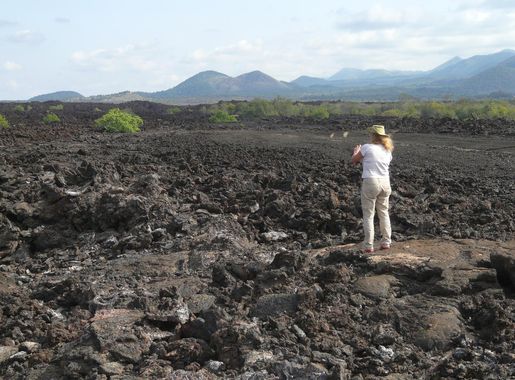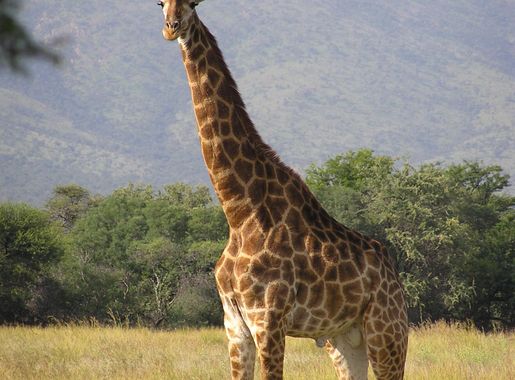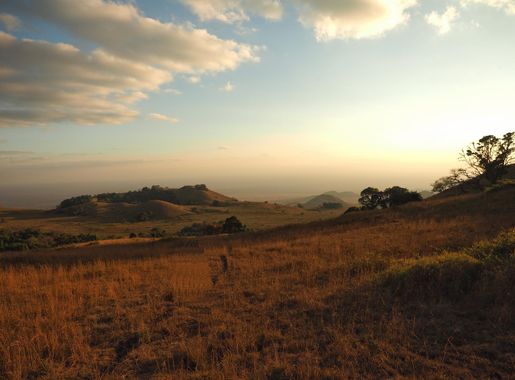
Chyulu Hills National Park: A Hidden Gem of Kenya
Discover the captivating beauty of Chyulu Hills National Park, where volcanic landscapes, diverse wildlife, and serene vistas await your exploration.
Nestled between the Tsavo and Amboseli National Parks, Chyulu Hills National Park is a hidden gem that showcases stunning landscapes, rich biodiversity, and unique geological features. The park is famous for its rolling green hills, ancient lava flows, and panoramic views of Mount Kilimanjaro, making it a paradise for nature lovers and adventure seekers alike. The park's lush green hills are a result of volcanic activity from the past, creating an otherworldly landscape filled with lava tubes, caves, and craters. One of the park's highlights is the Leviathan Cave, one of the longest lava tubes in the world, offering a thrilling exploration experience for visitors. The diverse flora and fauna in the park include various species of wildlife such as elephants, buffalos, leopards, and a rich array of birdlife, providing ample opportunities for wildlife photography. Chyulu Hills National Park also offers a range of activities for tourists, including hiking, horseback riding, and guided nature walks. The park is less crowded compared to other national parks in Kenya, allowing for a more intimate and tranquil experience with nature. Whether you're exploring the volcanic caves, enjoying a scenic hike, or simply soaking in the breathtaking views, Chyulu Hills National Park promises an unforgettable adventure.
Local tips in Chyulu Hills National Park
- Carry a good pair of hiking boots for exploring the rugged terrain and lava tubes.
- Visit during the dry season (June to October) for the best wildlife viewing opportunities.
- Consider hiring a local guide to enhance your experience and ensure you don't miss any hidden spots.
- Pack sufficient water and snacks as facilities within the park are limited.
- Don't forget your camera to capture the stunning landscapes and wildlife.
Chyulu Hills National Park: A Hidden Gem of Kenya
Nestled between the Tsavo and Amboseli National Parks, Chyulu Hills National Park is a hidden gem that showcases stunning landscapes, rich biodiversity, and unique geological features. The park is famous for its rolling green hills, ancient lava flows, and panoramic views of Mount Kilimanjaro, making it a paradise for nature lovers and adventure seekers alike. The park's lush green hills are a result of volcanic activity from the past, creating an otherworldly landscape filled with lava tubes, caves, and craters. One of the park's highlights is the Leviathan Cave, one of the longest lava tubes in the world, offering a thrilling exploration experience for visitors. The diverse flora and fauna in the park include various species of wildlife such as elephants, buffalos, leopards, and a rich array of birdlife, providing ample opportunities for wildlife photography. Chyulu Hills National Park also offers a range of activities for tourists, including hiking, horseback riding, and guided nature walks. The park is less crowded compared to other national parks in Kenya, allowing for a more intimate and tranquil experience with nature. Whether you're exploring the volcanic caves, enjoying a scenic hike, or simply soaking in the breathtaking views, Chyulu Hills National Park promises an unforgettable adventure.
When is the best time to go to Chyulu Hills National Park?
Iconic landmarks you can’t miss
Chyulu Hills
Discover the breathtaking Chyulu Hills in Kenya, where stunning landscapes, diverse wildlife, and unforgettable adventures await every traveler.
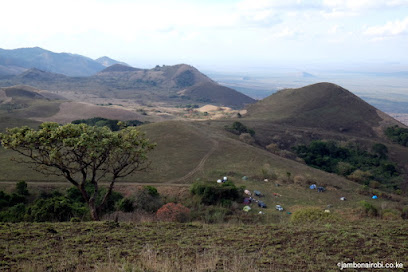
Chyulu Hills Campsite
Discover tranquility amid stunning landscapes at Chyulu Hills Campsite, your perfect escape into the heart of Kenya's natural beauty.

Kisula Caves
Discover the breathtaking Kisula Caves, a hidden gem in Kenya's Chyullu National Park, perfect for nature lovers and adventure seekers alike.
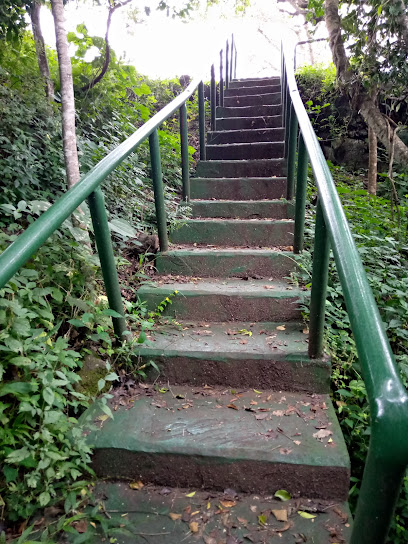
Chyulu
Explore the breathtaking Chyulu Mountains in Kenya, where adventure meets stunning natural beauty, offering an unforgettable experience for every traveler.

Chyulu National Park Headquarters
Explore the untouched beauty of Chyulu National Park Headquarters - a serene wildlife haven in the heart of Kenya, perfect for adventure seekers and nature lovers.
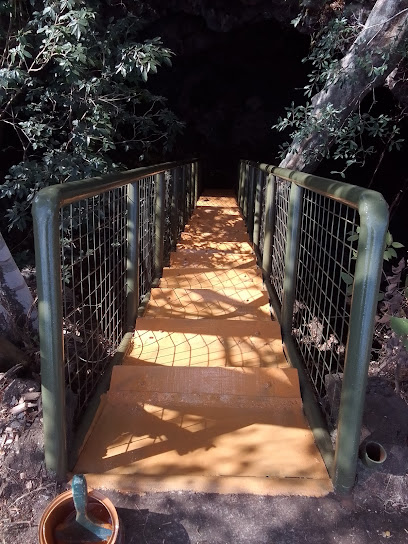
Unmissable attractions to see
Mount Kenya National Park
Explore the breathtaking landscapes, diverse wildlife, and rich culture of Mount Kenya National Park, a UNESCO World Heritage site and ecotourism haven.
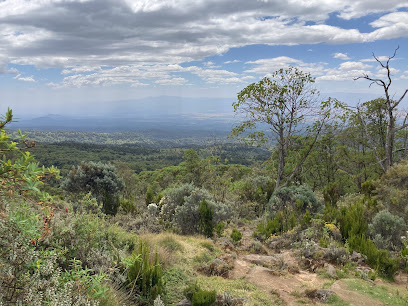
Amboseli National Park
Discover the stunning landscapes and rich wildlife of Amboseli National Park, where elephants roam freely at the foot of majestic Mount Kilimanjaro.

Samburu National Reserve
Discover the wild allure of Samburu National Reserve, a spectacular haven for wildlife lovers and cultural enthusiasts in Kenya.

Mzima Springs
Experience the tranquility and wildlife of Mzima Springs, a stunning oasis in Tsavo West National Park, perfect for nature lovers and adventurers.
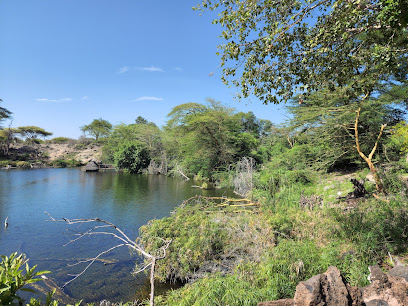
Lumo Community Wildlife Conservancy
Explore the breathtaking beauty of Lumo Community Wildlife Conservancy – a haven for wildlife and eco-tourism in the heart of Kenya.
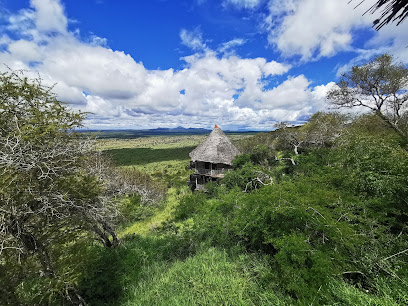
Uhuru Peak
Experience the ultimate adventure at Uhuru Peak, Africa's highest summit, where breathtaking views and diverse ecosystems await every intrepid traveler.
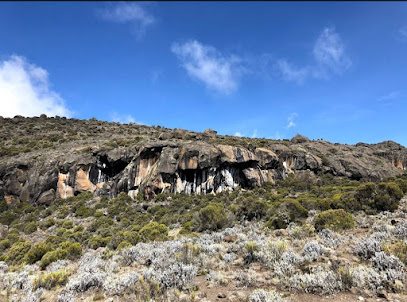
Jamia Mosque Makindu
Discover the architectural beauty and spiritual tranquility of Jamia Mosque Makindu, a must-visit attraction in Kenya's vibrant Makindu town.
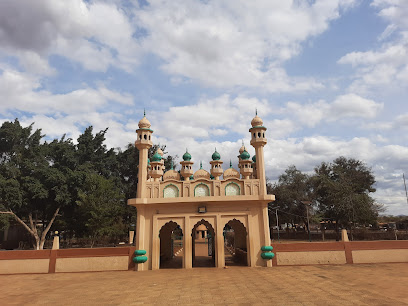
Kilimanjaro Balloon Safaris
Experience the breathtaking beauty of Amboseli and Kilimanjaro from the skies with an unforgettable hot air balloon safari.
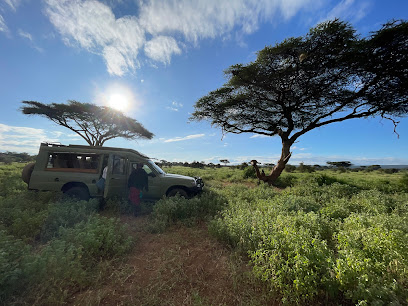
Amboseli Bush Camp
Discover the natural beauty and wildlife of Amboseli at Amboseli Bush Camp, set against the breathtaking backdrop of Mount Kilimanjaro.

Rhino Sanctuary
Explore the enchanting Rhino Sanctuary in Chala, where conservation and wildlife observation come together in a breathtaking natural setting.
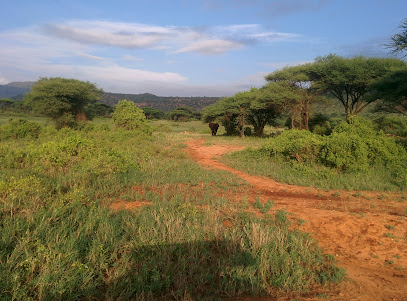
Chyulu Hills
Discover the breathtaking Chyulu Hills in Kenya, where stunning landscapes meet rich wildlife and vibrant local cultures.
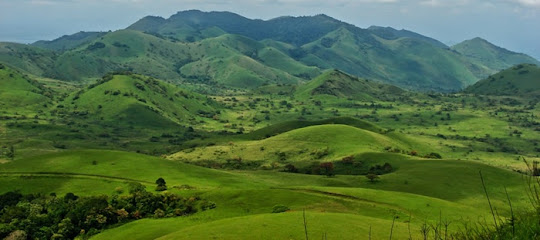
Rongai Gate
Immerse in the natural beauty of Rongai Gate, the gateway to Kilimanjaro, offering breathtaking views and serene hiking experiences in Tanzania.
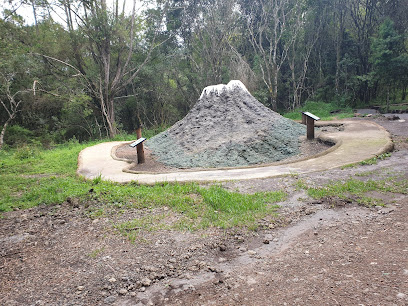
Camp Onteppesi
Explore the serene beauty and rich wildlife at Camp Onteppesi, a premier tourist attraction in the heart of Kimana, Kenya.
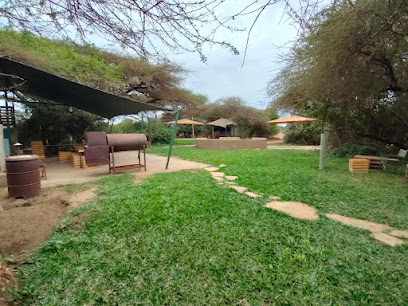
Killi Safaris
Discover Killi Safaris, a gem in Oloitokitok, Kenya, where adventure meets stunning landscapes and rich wildlife experiences await.
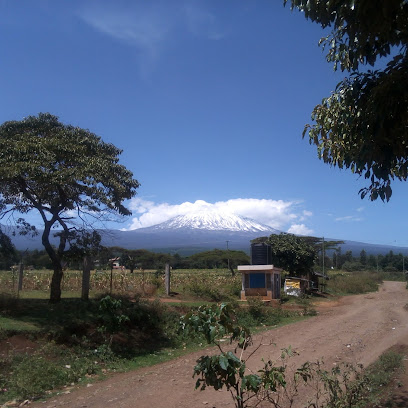
Kisula Caves
Discover the breathtaking formations and rich cultural history of Kisula Caves, a must-visit tourist attraction in Maikuu, Kenya.
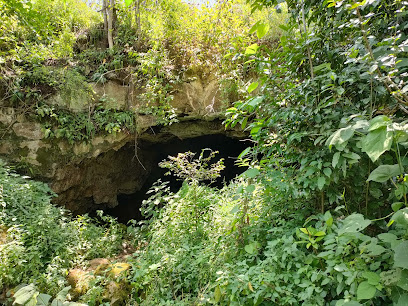
Essential places to dine
Midway Refreshments
Experience culinary delights at Midway Refreshments on the Nairobi-Mombasa Highway—your perfect stop for local flavors and comfort.
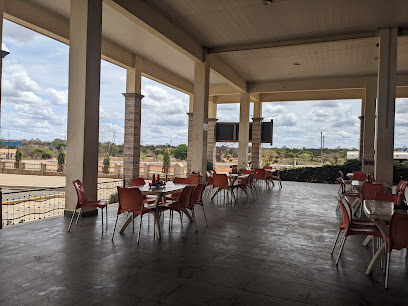
Chyulu Hills National Park
Discover the breathtaking landscapes and diverse wildlife at Chyulu Hills National Park - a true Kenyan treasure for adventure seekers.
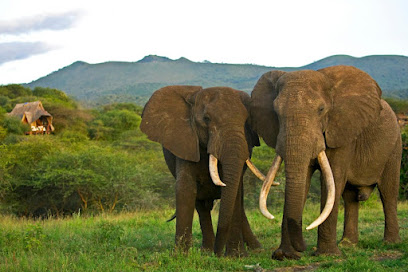
Savannah Paradise Hotel-Makindu
Experience comfort and hospitality at Savannah Paradise Hotel-Makindu – your perfect retreat in Kenya.
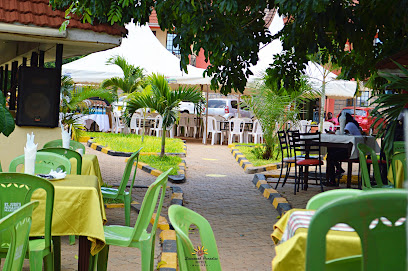
Kyeni Resort
Experience authentic Kenyan cuisine at Kyeni Resort in Kikambuani - where every dish tells a story.
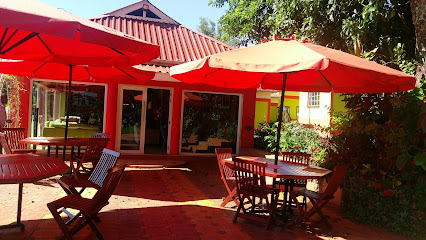
Brickhouse Restaurant
Experience authentic Kenyan flavors and global cuisine at Brickhouse Restaurant in Wote - a culinary gem for every traveler.
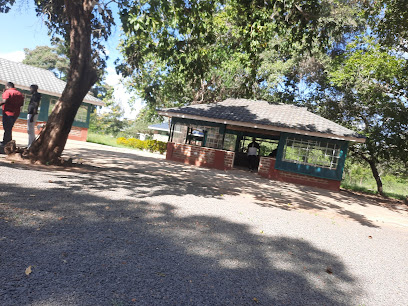
Porini Inn Makindu
Discover authentic Kenyan cuisine and serene accommodations at Porini Inn Makindu – your perfect retreat in nature's embrace.
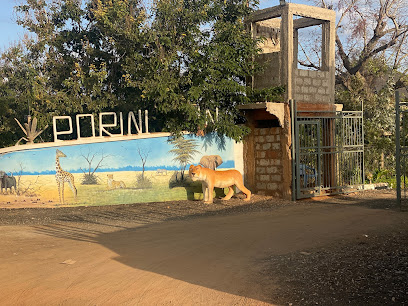
Kwa Biwott
Savor authentic East African grilled delights at Kwa Biwott - your culinary haven in Kimana.
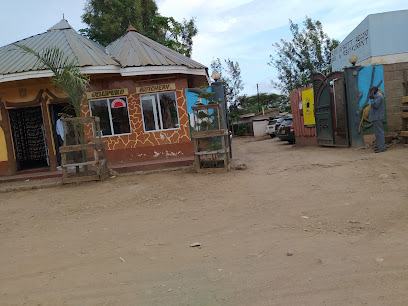
National Oil Restaurant
Experience authentic Kenyan flavors at National Oil Restaurant in Mtito Andei – where every dish tells a story.
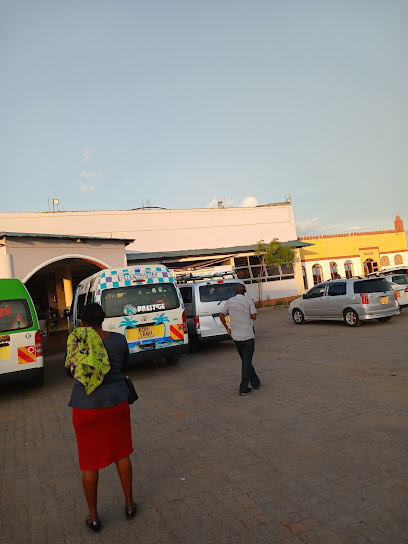
Amboseli Junction Hotel and Curio Shop
Discover authentic Kenyan cuisine and unique souvenirs at Amboseli Junction Hotel and Curio Shop in Kimana.
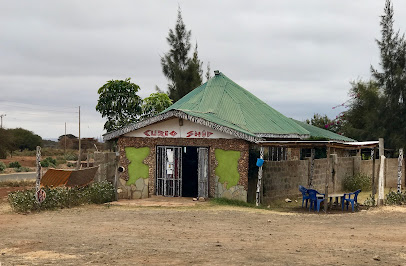
Bulls Eye
Experience culinary delights at Bulls Eye on Nairobi - Namanga Rd; where local flavors meet international cuisine in an inviting atmosphere.
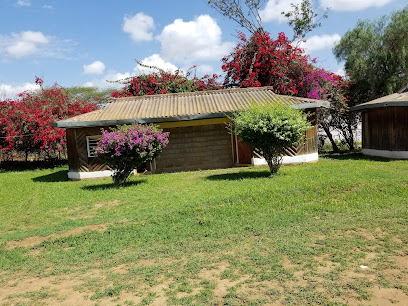
Eclipse Hotel
Discover Eclipse Hotel in Kibwezi: A delightful restaurant offering authentic local cuisine and warm hospitality amidst beautiful surroundings.
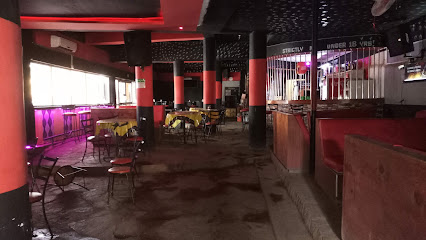
Ambokili Lodge
Discover comfort amidst nature at Ambokili Lodge in Amboseli - where breathtaking views meet exceptional hospitality.

Drylands Natural Resource Centre
Experience delightful local cuisine surrounded by nature at Drylands Natural Resource Centre in Muthwani.
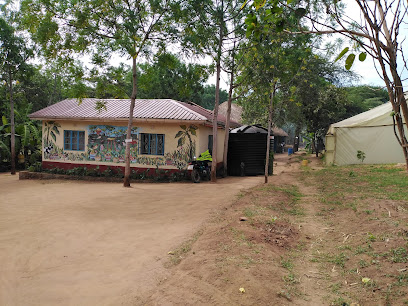
Osotua plaza
Experience the vibrant flavors of Kenya at Osotua Plaza in Oloitokitok - where local cuisine meets an inviting atmosphere.
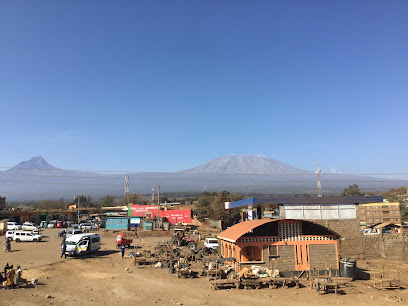
Shushan Palace
Experience authentic Kenyan cuisine at Shushan Palace in Makindu – where local flavors meet warm hospitality.
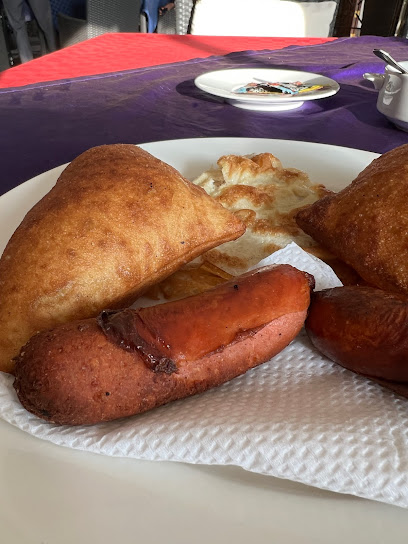
Markets, malls and hidden boutiques
Chyulu Hills
Explore the breathtaking Chyulu Hills in Kenya, where adventure, wildlife, and stunning landscapes await every traveler.
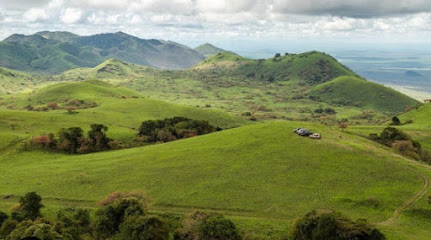
The Masters
Explore The Masters in Makindu for a unique shopping and culinary experience featuring fresh groceries and delectable baked goods.
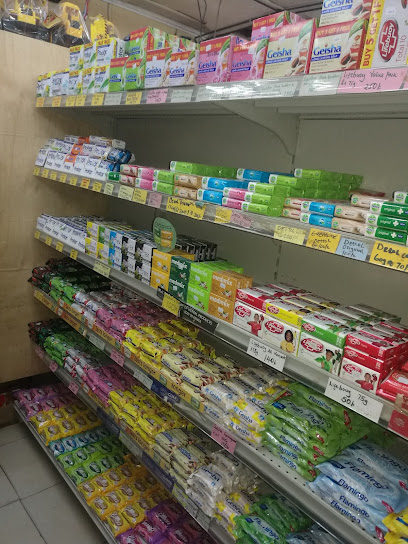
Kimooini Market
Discover the authentic charm of Kimooini Market, a vibrant general store where local culture and community come together in a colorful shopping experience.

Destiny Boutique & Beauty Shop
Explore vibrant fashion at Destiny Boutique & Beauty Shop in Makindu, where local styles meet modern trends for a unique shopping experience.

Mama Teresa Shop
Explore Mama Teresa Shop for unique home goods and local crafts that capture the essence of Kenyan culture and artistry.
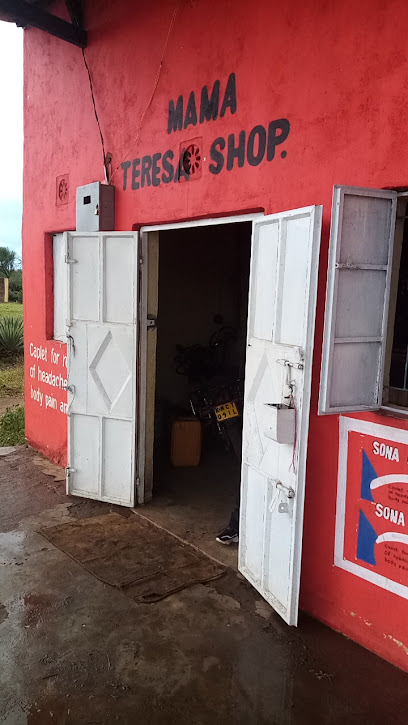
John Mulaulu
Discover unique home goods and authentic Kenyan crafts at John Mulaulu, a must-visit store for tourists seeking cultural treasures.

Kwa thirty thirty boutique
Explore Kwa Thirty Thirty Boutique in Makindu for unique handcrafted treasures and a glimpse into Kenyan culture.

Makindu Crafts - Mama Muteti
Explore the vibrant culture of Kenya through unique crafts at Makindu Crafts - Mama Muteti, a treasure trove for authentic souvenirs.
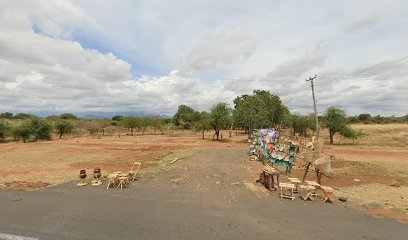
CLIMAX FASHION BOUTIQUE.
Discover the best of Kenyan fashion at Climax Fashion Boutique in Makindu, where style meets local craftsmanship.
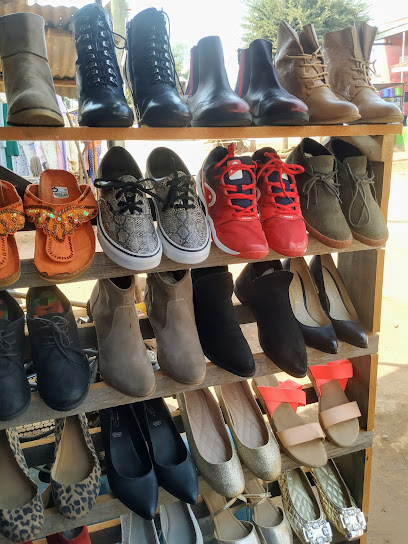
C & A
Explore C & A in Mbuinzau for trendy and affordable fashion that captures the essence of Kenyan style.

Heritage shopping complex
Explore the Heritage Shopping Complex in Makindu for a unique shopping experience filled with local crafts, fresh produce, and a taste of Kenyan culture.
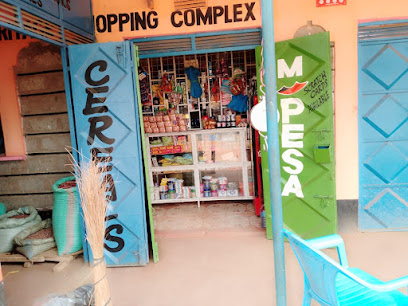
mteule fashions and uniforms
Explore local fashion at Mteule Fashions and Uniforms, a vibrant clothing store in Makindu offering unique styles and quality service.

Kasweswe Shopping Complex
Explore the vibrant Kasweswe Shopping Complex in Makindu for a unique blend of local crafts, delicious food, and cultural experiences.
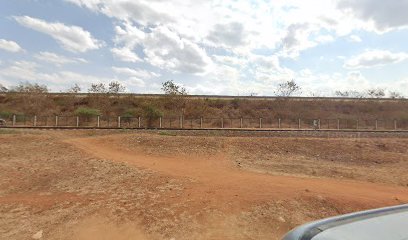
Ilkilinyet Dispensary
Discover essential healthcare at Ilkilinyet Dispensary in Memerush, your reliable pharmacy for medical supplies and advice during your travels.

Soto Market
Discover the vibrant essence of local culture at Soto Market in Kaunguni, where shopping meets culinary delight.

Essential bars & hidden hideouts
Silent Bar Kimana
Discover the lively atmosphere of Silent Bar Kimana, a perfect spot for relaxation and local culture in Kenya's heart.
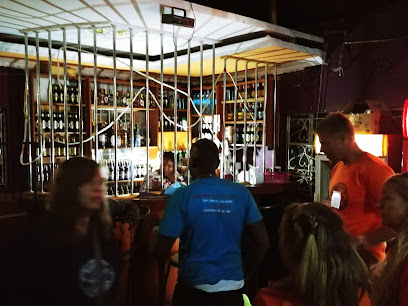
Dannex Bar and Restaurant
Discover the lively ambiance and delicious cuisine at Dannex Bar and Restaurant in Makindu, a perfect spot for relaxation and fun.

Aro Thea Bar Club and Grill
Experience the vibrant flavors of Kibwezi at Aro Thea Bar Club and Grill, where local cuisine meets a welcoming atmosphere.
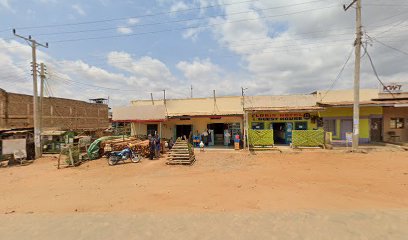
Crown Bar
Experience the vibrant nightlife at Crown Bar, a lively spot known for its diverse drinks and welcoming atmosphere, perfect for socializing and unwinding.
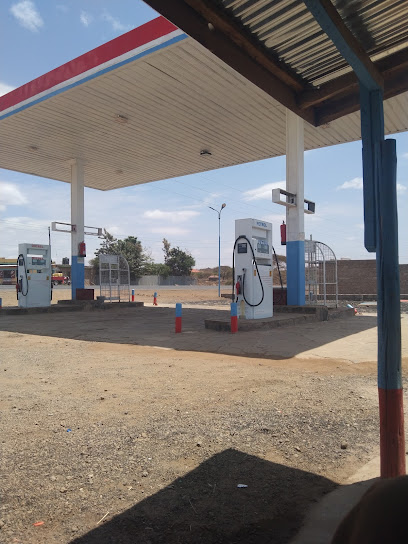
DE SAILOR LOUNGE
Experience the vibrant nightlife of Makindu at De Sailor Lounge, where drinks flow and good times abound in a welcoming atmosphere.
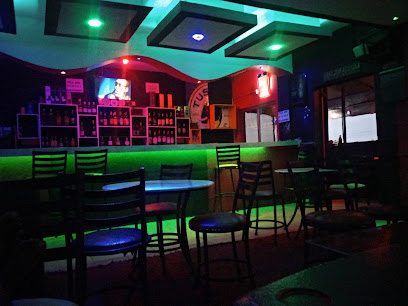
English Point Bar Kasunguni kwa kawai
Discover the lively vibe of English Point Bar in Kasunguni, where refreshing drinks meet local culture and entertainment under the stars.

3 stars bar and restaurant makindu
Experience local flavors and vibrant atmosphere at 3 Stars Bar and Restaurant in Makindu, a must-visit for every traveler seeking authentic Kenyan cuisine.
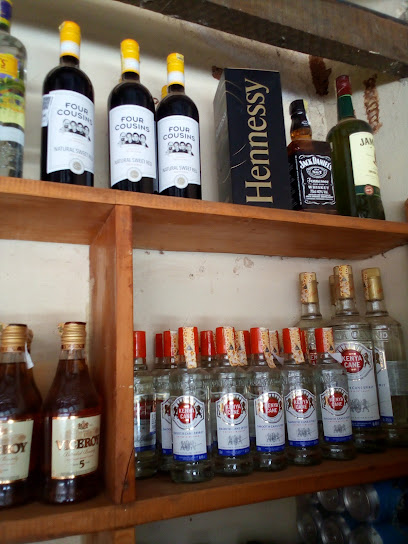
WETEMI BAR AND RESTAURANT
Discover the vibrant atmosphere and authentic flavors at WETEMI BAR AND RESTAURANT in Mulala, a cultural gem for food enthusiasts.
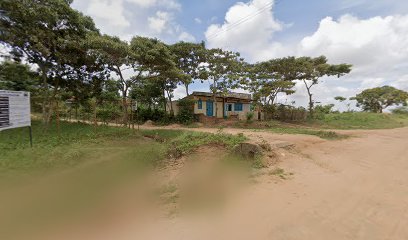
Riverside Bar
Discover Riverside Bar, where stunning river views meet vibrant nightlife in a relaxing atmosphere. Perfect for unwinding during your travels.
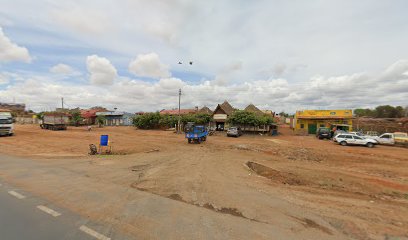
Joy Land Bar
Experience the lively ambiance and local culture at Joy Land Bar, a must-visit spot in Makindu for tourists seeking relaxation and fun.
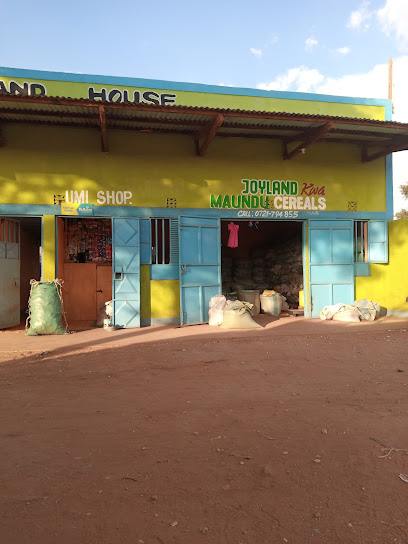
Accurate Weekend Bar
Experience the vibrant nightlife and local flavors at Accurate Weekend Bar in Msongaleni, a must-visit for tourists seeking authentic Kenyan hospitality.

Makuti Bar
Discover the vibrant nightlife of Muvau at Makuti Bar, where friendly vibes and refreshing drinks await you.

Outpost Tarvern
Experience the vibrant nightlife at Outpost Tavern in Mbuinzau, where local brews and a lively atmosphere await every visitor.
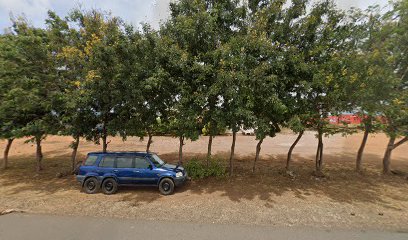
JOE PUB
Discover the lively atmosphere of Joe Pub in Kiangini, where local flavors meet vibrant social experiences in a welcoming setting.

KU LEGACY
Experience the heart of Msongaleni's nightlife at KU LEGACY, where vibrant atmosphere meets diverse drink selection.
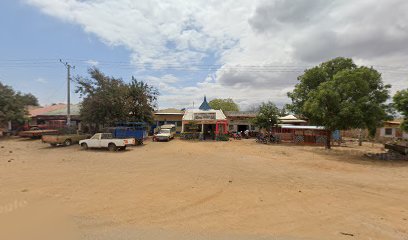
Local Phrases about Chyulu Hills National Park
-
- HelloJambo
[jahm-boh] - GoodbyeKwaheri
[kwah-heh-ree] - YesNdio
[nn-dee-oh] - NoHapana
[hah-pah-nah] - Please/You're welcomeTafadhali
[tah-fah-dha-lee] - Thank youAsante
[ah-sahn-teh] - Excuse me/SorrySamahani
[sah-mah-hah-nee] - How are you?U hali gani?
[oo hah-lee gah-nee] - Fine. And you?Salama. Na wewe?
[sah-lah-mah. nah way-way] - Do you speak English?Unasema Kiingereza?
[oo-nah-say-mah kee-een-geh-reh-zah] - I don't understandSielewi
[see-eh-leh-wee]
- HelloJambo
-
- I'd like to see the menu, pleaseNingependa kuona menyu, tafadhali
[nin-geh-pen-dah kwoh-nah men-yoo, tah-fah-dha-lee] - I don't eat meatSili nyama
[see-lee nyah-mah] - Cheers!Mambo!
[mahm-boh] - I would like to pay, pleaseNingependa kulipa, tafadhali
[nin-geh-pen-dah koo-lee-pah, tah-fah-dha-lee]
- I'd like to see the menu, pleaseNingependa kuona menyu, tafadhali
-
- Help!Usaidizi!
[oo-sigh-dee-zee] - Go away!Nenda zako!
[nen-dah zah-koh] - Call the Police!Piga polisi!
[pee-gah poh-lee-see] - Call a doctor!Piga daktari!
[pee-gah dahk-tah-ree] - I'm lostNimepotea
[nee-meh-poh-teh-ah] - I'm illNinaumwa
[nee-nah-oom-wah]
- Help!Usaidizi!
-
- I'd like to buy...Ningependa kununua...
[nin-geh-pen-dah koo-noo-noo-ah] - I'm just lookingNatazama tu
[nah-tah-zah-mah too] - How much is it?Bei ni kiasi gani?
[bay nee kyah-see gah-nee] - That's too expensiveHilo ni ghali sana
[hee-loh nee gah-lee sah-nah] - Can you lower the price?Unaweza kupunguza bei?
[oo-nah-weh-zah koo-poon-goo-zah bay]
- I'd like to buy...Ningependa kununua...
-
- What time is it?Saa ngapi?
[sah-ah ngah-pee] - It's one o'clockNi saa moja
[nee sah-ah moh-jah] - Half past (10)Saa moja na nusu
[sah-ah moh-jah nah noo-soo] - MorningAsubuhi
[ah-soo-boo-hee] - AfternoonMchana
[m-chah-nah] - EveningJioni
[joh-ee-nee] - YesterdayJana
[jah-nah] - TodayLeo
[leh-oh] - TomorrowKesho
[keh-shoh] - 1Moja
[moh-jah] - 2Mbili
[m-bee-lee] - 3Tatu
[tah-too] - 4Nne
[neh] - 5Tano
[tah-noh] - 6Sita
[see-tah] - 7Saba
[sah-bah] - 8Nane
[nah-neh] - 9Tisa
[tee-sah] - 10Kumi
[koo-mee]
- What time is it?Saa ngapi?
-
- Where's a/the...?Iko wapi...?
[ee-koh wah-pee] - What's the address?Anuani ni gani?
[ah-noo-ah-nee nee gah-nee] - Can you show me (on the map)?Unaweza kunionyesha (kwenye ramani)?
[oo-nah-weh-zah koo-nee-oh-nyeh-shah (kweh-neh rah-mah-nee)] - When's the next (bus)?Basi la pili litakuja lini?
[bah-see lah pee-lee lee-tah-koo-jah lee-nee] - A ticket (to ....)Tiketi (kwenda ....)
[tee-keh-tee (kwehn-dah)]
- Where's a/the...?Iko wapi...?
History of Chyulu Hills National Park
-
The Chyulu Hills are a relatively young volcanic mountain range in southeastern Kenya, formed approximately 500 years ago. These hills were created by volcanic activity, and they are characterized by their rugged terrain and numerous caves formed by lava tubes. The highest peak of the Chyulu Hills stands at around 2,188 meters above sea level, providing a dramatic and picturesque landscape.
-
The Chyulu Hills region is traditionally inhabited by the Maasai and Kamba communities. These indigenous groups have a rich cultural heritage and have lived in harmony with the natural environment for centuries. The Maasai are known for their pastoralist lifestyle, while the Kamba are primarily agriculturalists. Both communities hold the Chyulu Hills in high cultural and spiritual regard.
-
Chyulu Hills National Park was established in 1983 to protect the unique volcanic landscape and the diverse flora and fauna of the region. The park covers an area of approximately 741 square kilometers and is managed by the Kenya Wildlife Service. The establishment of the park aimed to conserve the area's natural beauty and biodiversity while promoting eco-tourism.
-
During World War II, the Chyulu Hills served as a strategic location for the British military. The hills provided a vantage point for monitoring movements in the region, and several airstrips were constructed to support military operations. Remnants of these airstrips can still be found in the park, offering a glimpse into the area's wartime history.
-
In recent years, significant efforts have been made to conserve the Chyulu Hills ecosystem. Various initiatives have been launched to combat poaching, promote sustainable land use, and preserve the region's biodiversity. Organizations such as the Maasai Wilderness Conservation Trust work closely with local communities to ensure the long-term protection of the Chyulu Hills.
-
Tourism development in Chyulu Hills National Park has been carefully managed to minimize environmental impact while providing visitors with an authentic experience. The park offers a range of activities, including hiking, wildlife viewing, and exploring the volcanic caves. Luxury lodges and eco-friendly campsites are available for accommodation, allowing tourists to immerse themselves in the natural beauty of the area.
Chyulu Hills National Park Essentials
-
Chyulu Hills National Park is located in southeastern Kenya, between Tsavo West National Park and Amboseli National Park. The nearest international airport is Jomo Kenyatta International Airport (NBO) in Nairobi, approximately 250 kilometers away. From Nairobi, you can take a domestic flight to Amboseli Airport, which is about an hour's drive from the park. Alternatively, you can drive from Nairobi, which takes around 4 to 5 hours via the Mombasa Road (A109). There are also organized tours and private transfers available.
-
Within Chyulu Hills National Park, the most common way to get around is by 4x4 vehicle, which is essential for navigating the rugged terrain. Guided tours typically provide transportation. If you prefer to explore on your own, renting a 4x4 vehicle in Nairobi or at Amboseli Airport is advisable. There are no public transport options within the park, so private transportation is a must.
-
The official currency in Kenya is the Kenyan Shilling (KES). Credit cards are accepted at larger lodges and hotels, but it is advisable to carry cash for smaller transactions and tips. ATMs are available in major cities like Nairobi, but you should withdraw sufficient cash before heading to Chyulu Hills, as there are no ATMs in the park.
-
Chyulu Hills National Park is generally safe for tourists. However, standard precautions should be taken. Avoid walking alone at night and always keep an eye on your belongings. While the park itself is secure, be cautious when traveling through nearby towns and avoid areas that are not well-lit or seem unsafe. Consult with your tour guide or lodge staff for specific advice on safety.
-
In case of emergency, contact your lodge or tour operator immediately. They can coordinate with local authorities and medical facilities. The nearest major hospital is in Nairobi, so having travel insurance that covers emergency medical evacuation is highly recommended. For less severe issues, first aid is available at most lodges and camps.
-
Fashion: Do wear lightweight, breathable clothing and sturdy shoes suitable for hiking. Avoid bright colors that may disturb wildlife. Religion: Do respect local customs and dress modestly when visiting nearby communities. Public Transport: Since there is no public transport in the park, this is not applicable. Greetings: Do greet people with a handshake. It is polite to learn a few words of Swahili, like 'Jambo' (Hello). Eating & Drinking: Do try local dishes and drink plenty of water to stay hydrated. Avoid drinking tap water; stick to bottled water instead.
-
To experience Chyulu Hills like a local, engage with the Maasai communities living near the park. Participate in cultural tours to learn about their way of life. Visit the Shetani Lava Flow for unique geological formations. For the adventurous, consider a horseback safari for a different perspective of the park. Early morning and late afternoon are the best times for wildlife viewing.
Nearby Cities to Chyulu Hills National Park
-
Things To Do in Arusha
-
Things To Do in Nairobi
-
Things To Do in Naivasha
-
Things To Do in Malindi
-
Things To Do in Mombasa
-
Things To Do in Diani Beach
-
Things To Do in Nakuru
-
Things To Do in Tanga
-
Things To Do in Lamu
-
Things To Do in Kisumu
-
Things To Do in Singida
-
Things To Do in Eldoret
-
Things To Do in Stone Town
-
Things To Do in Zanzibar City
-
Things To Do in Dodoma


